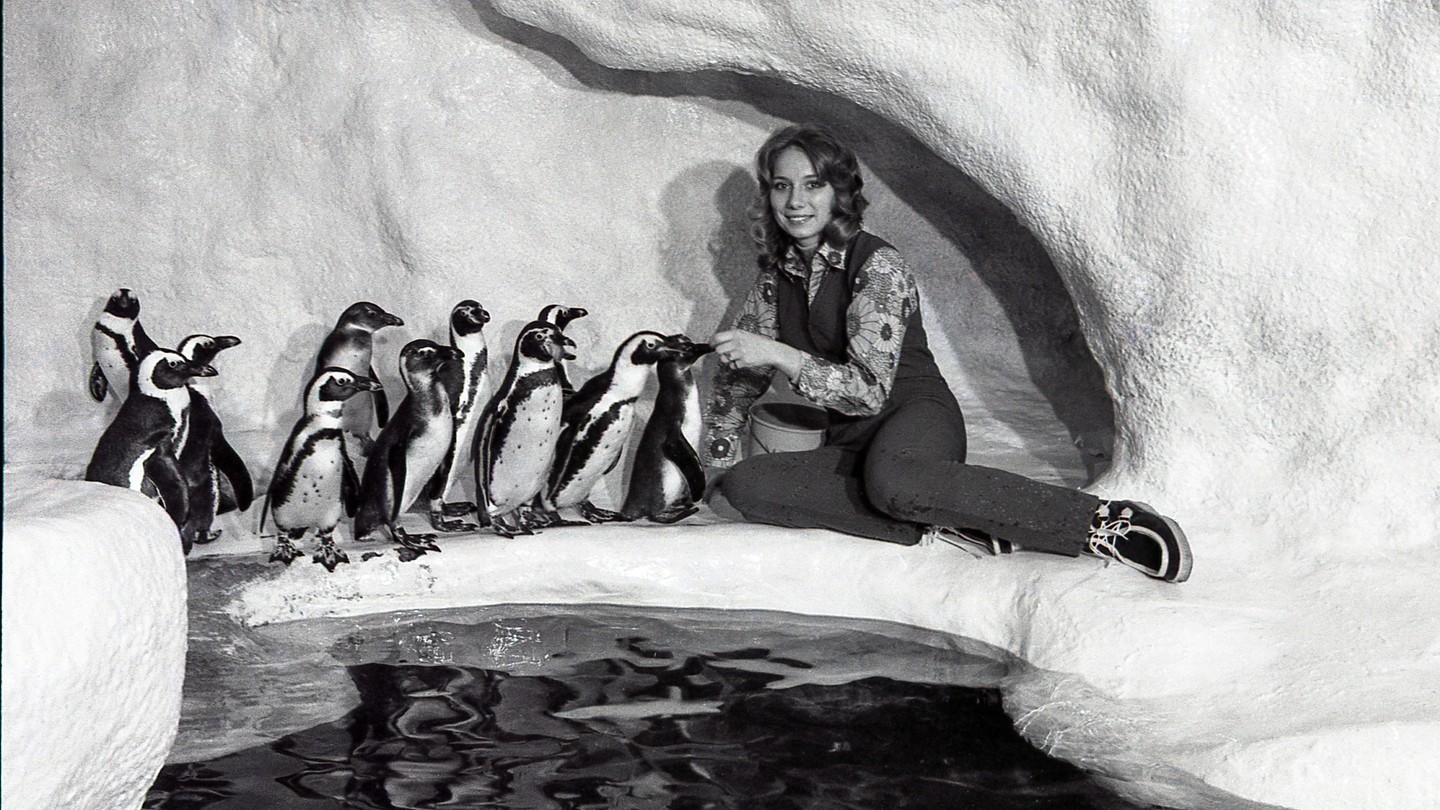- Evolution from the original African penguin exhibit to the current habitat design
- Importance of species-specific habitat design for conservation and animal welfare
- The role of temperate climate adaptation in the care of African penguins
- Educational and conservational efforts for African penguins facilitated by the exhibit
- Challenges in maintaining an authentic and healthy environment for the African penguin colony
When the doors of the Aquarium first opened in 1969, African penguins became one of the stars among the diverse marine life on display. Initially, the colony comprised only ten individuals and resided in a modest exhibit on the second floor. This early exhibit was quite different from what visitors encounter today, featuring artificial ice and snow, a surprising choice given the natural habitat of these birds.
African penguins, Spheniscus demersus, hail from the temperate zones of southern Africa. They are adapted to fluctuating coastal climates where temperatures typically range between 42ºF and 68ºF. Unlike their Antarctic cousins, these penguins do not live amongst vast expanses of ice and snow. When designing habitats for species such as the African penguin, it’s critical to reflect their natural environment. This consideration helps encourage natural behaviors, which benefit their physical and psychological well-being.
The original exhibit’s artificial snow scenario was phased out in favor of a habitat design more attuned to these birds’ needs and natural preferences. The upgraded exhibit space aimed to mimic the rocky shores and beach landscape typical of the South African coast. It was complete with caves and spaces amenable to their natural behaviors, including nesting and social interaction.
Several factors are considered when creating a species-specific habitat. For African penguins, this includes temperature control, water quality, and landscape. The water in the exhibit is carefully treated and kept at a consistent temperature, which is crucial for the penguins, who spend a significant amount of time swimming. The proximity to saltwater is also key for their health and resembles the coastal environments from which they originate.
Another significant detail of the exhibit transformation was the introduction of a breeding program. With the African penguin species classified as endangered due to threats like oil spills, habitat destruction, and overfishing in their native habitats, breeding programs in captivity are essential to their survival. The expansion of the colony from 10 to 38 individuals is not just a numerical increase; it represents a genetic diversity lifeline for the species.
Educational initiatives are at the forefront of the exhibit’s mission. Efforts to inform the public about the plight of African penguins and their ecosystem are embedded into the exhibit design. Interactive elements, informative signage, and opportunities to observe the penguins’ behavior up close work together to engage visitors and foster a connection with the animals. This engenders a sense of care and concern for the species’ conservation in the wild.
Furthermore, the exhibit serves as a training ground for wildlife biologists and zoo staff who work to preserve the species. By studying the penguins in a controlled environment, professionals can gather data on their diet, social structures, and breeding habits – information that’s instrumental in conservation strategies for wild populations.
Maintaining an authentic and critically supportive environment for the colony is laden with challenges. Foremost, it involves replicating a complex ecosystem within a finite space. This requires dynamic water filtration systems to emulate clean ocean conditions, varied nutrition plans to reflect the diverse diet these birds would have in the wild, and meticulous attention to social dynamics within the colony.
As the exhibit has evolved, so has the understanding of what these penguins require to thrive. For instance, the species is known for a peculiar behavior called “preening,” which involves using their beaks to spread waterproofing oil from a gland near their tails across their feathers. The exhibit provides ample space and a setting conducive to essential self-maintenance behaviors.
Exhibits like that of the African penguin at the Aquarium are more than showcases for marine life. They represent a steadfast commitment to the principles of conservation, education, and the pursuit of knowledge that informs global efforts to protect endangered species. Through careful design and passionate stewardship, these spaces continue to play a vital role in the ongoing narrative of wildlife conservation, ensuring that African penguins will glide through their waters and waddle over their rocks for visitor enjoyment and for their survival into the future.
*****
Source Description
to our original African penguin exhibit! 😮
We’ve had African penguins at the Aquarium since we opened in 1969, but they used to reside in a smaller exhibit on the second floor. The original exhibit had only 10 African penguins in the colony, which has grown to 38 individuals today!
Another key feature from the original exhibit? Artificial ice and snow! Although it may seem like penguins belong in the snow, African penguins are a temperate species, meaning they thrive in temperatures between 42º-68º F. Their current exhibit was designed to replicate their wild habitat, which encourages natural penguin behaviors!


